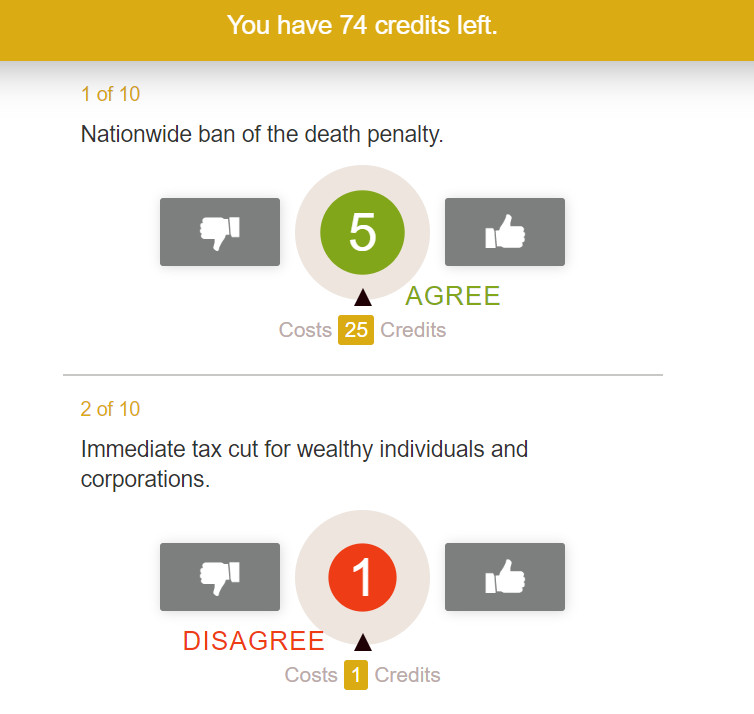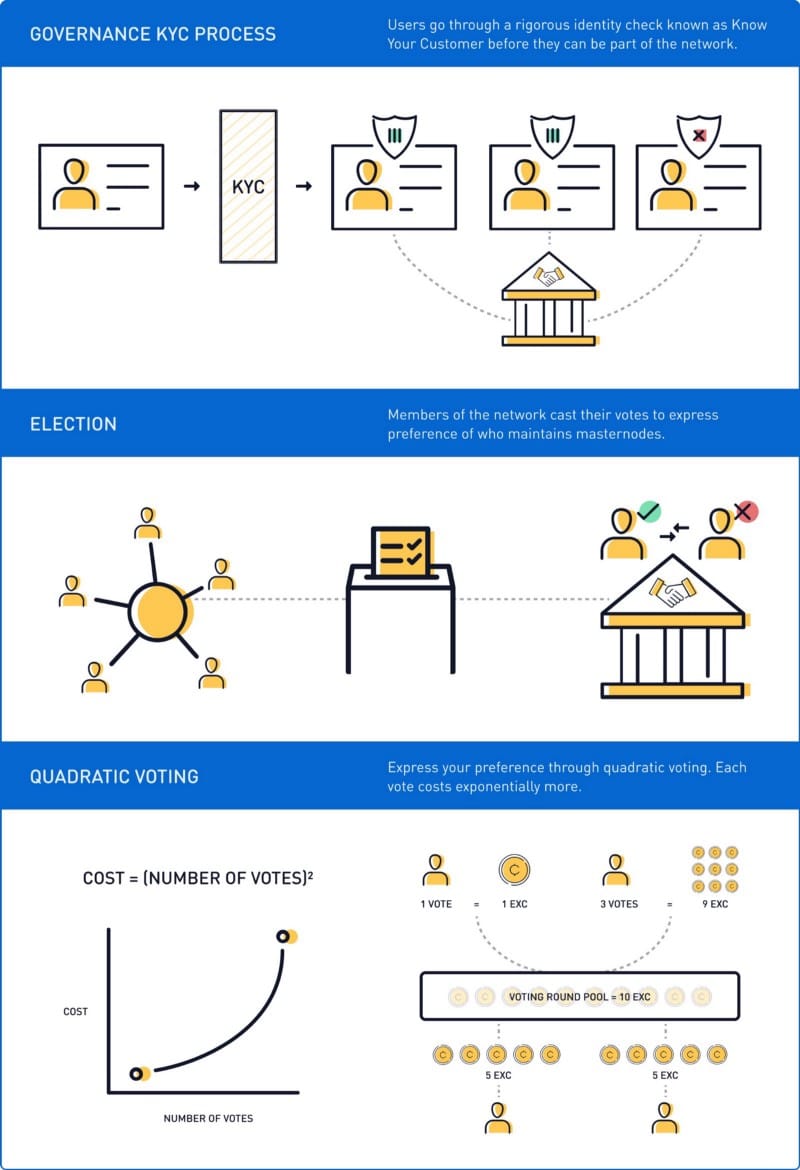https://github.com/andreid/qv_voting
Quadratic voting system with smart contract help
https://github.com/andreid/qv_voting
ballot blockchain dapp ethereum solidity voting
Last synced: 6 months ago
JSON representation
Quadratic voting system with smart contract help
- Host: GitHub
- URL: https://github.com/andreid/qv_voting
- Owner: AndreiD
- License: mit
- Created: 2019-05-28T16:15:35.000Z (over 6 years ago)
- Default Branch: master
- Last Pushed: 2024-10-09T09:11:58.000Z (12 months ago)
- Last Synced: 2025-03-27T19:42:02.088Z (6 months ago)
- Topics: ballot, blockchain, dapp, ethereum, solidity, voting
- Language: Solidity
- Size: 907 KB
- Stars: 27
- Watchers: 2
- Forks: 6
- Open Issues: 7
-
Metadata Files:
- Readme: README.md
- Changelog: CHANGELOG
- Contributing: CONTRIBUTING.md
- License: LICENSE.md
Awesome Lists containing this project
README
# Quadratic Voting with Smart Contracts
# Outdated, use with care!
### QV Voting on the Ethereum Blockchain via a Smart Contract
Fell free to use this repository for anything you want. The code is free as in beer, and I require no attribution. I highly appreciate suggestions and you can contact me via the issues page.
### Quick Overview
Notice in the picture below that to cast 5 votes you have to spend 25 Credits.

from Radical Markets: Uprooting Capitalism and Democracy for a Just Society!
So 1 credit gives you 1 vote, 4 credits gives you 2 votes, 9 credits - 3 votes and so on.
Why is this important ? Checkout the explanation section
### Process
Usually a KYC (or by using some electronic SSN, employees id etc), each person is give PERIODICALLY a number of tokens. They can keep it, or spend it to vote for the issues they care about.
Everything is tracked at blockchain level (usually a private one).
 Picture by https://twitter.com/eximchainexc?lang=en
Picture by https://twitter.com/eximchainexc?lang=en
### Learn more about QV Voting
Collective decision making using a majority rule of 50+1 is a standard procedure used by many firms and countries to decide whether a policy should be implemented. However, this
mechanism is subject to the “tiranny of the majority” and therefore may give rise to situations that deviate the collective decision-making process from optimality (Posner and Weyl, 2014).
Consider for instance a minority that care much more intensely about getting a public good
(e.g. a road or a anti-discrimination law) than the majority does for the opposite outcome.
With the use of a simple majoritarian rule it might be the case that the losses caused to the
majority are greater than the benefits provided to the majority, an inefficient outcome from an
utilitarian point of view. More generally, take a binary collective decision with a distribution of
preferences such that preferring one of the choices is represented by a positive valuation whereas
preferring the complementary choice is represented by a negative valuation. A majority voting
system will lead to an inefficient outcome when the expected value and the median value are
on opposite sides of the valuation space.
The Quadratic Voting mechanism (henceforth QV) proposed by Weyl (2013) is a novel
electoral design which can yield more efficient outcomes than a majority voting system in
these situations. Under the QV mechanism individuals buy votes at a quadratic unit cost
and receive a reimbursement equal to the average of the others’ expenditures in votes. Hence,
the marginal cost of an additional vote is proportional to the votes already purchased, and
the marginal benefit of an additional vote is proportional to the cardinal value of changing
the policy. Furthermore, because individuals receive a reimbursement equal to the average of
others’ payment, the mechanism is budget balanced. In addition, QV tries to resolve other
problems of mechanism design such as the collusion problem of the Vickrey-Clarke-Groves
(VCG) mechanism, and the information problems of the Expected Externality mechanism,
where a social planner needs to know the distribution of the valuations that agents have.
you can read more here: https://pdfs.semanticscholar.org/974c/ee1137b4a56372af58772a88361b3ff4b9d6.pdf
According to its authors Steven P. Lalley and E. Glen Weyl, Quadratic voting is claimed to achieve the greatest possible good for the greatest number of group members, although other proponents of Quadratic Voting state that this is only true approximately. It addresses issues of voting paradox and majority-rule.
Based on market principles, each voter is endowed with a budget of “voice credits” that they may spend influencing the outcome of a range of decisions. If a participant has a strong preference for or against a particular decision, additional votes can be allocated. A vote pricing rule determines the cost of additional votes, whereby each vote increasingly becomes more expensive.
The quadratic nature of the voting means that a voter can use his or her votes more efficiently spread across many issues. For example, a voter with a budget of 16 vote credits can apply 1 vote credit to each of 16 issues. However, if they feel strongly about a single issue, they can apply 4 votes at the cost of 16 credits to a single issue. This will use their entire budget. This also means there is a large incentive to buy and sell votes, although using a strictly secret ballot gives some protection against vote buying as the purchase cannot be verified.
## Contributing
Please read [CONTRIBUTING.md](CONTRIBUTING.md) for details on our code of conduct, and the process for submitting pull requests to us.
## License
This project is licensed under the MIT License - see the [LICENSE.md](LICENSE.md) file for details